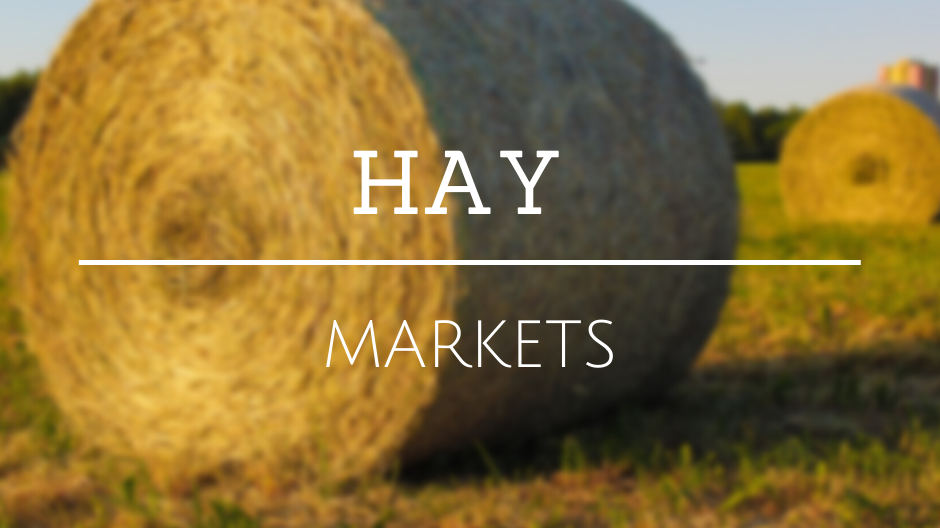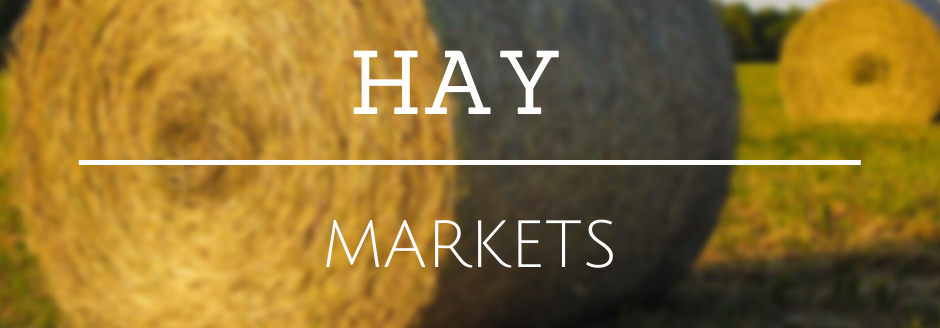Colorado—In the July 27 report, compared to last report, trade activity and demand has softened. Hay trades are slow as first cutting gets wrapped up and second cutting gets started across the state. Areas that have received a lot of rain since mid May have created challenges in putting up hay that will test. Later cut alfalfa with low test is going to be moving into the grinder markets. Producers have struggled to put up hay without any rain on it. According to Colorado Crop Progress report alfalfa hay second cutting is 36% complete and third cutting is 5% compete.
Missouri—In the July 27 report, compared to last report, hay demand is good to very good. The supply is light. Hay prices are steady to firm. A bit more hay showing up in the market this week, but not lasting long before it is snatched up. Several guys out baling any bit of regrowth they may have or other areas that typically may not be baled in a normal year. Much of this hay is lower quality, with a fair amount of undesirable weeds and such mixed in with grass. There has also been some reports of corn chopping going on in some areas. Some areas see precipitation.
Nebraska—In the July 27 report, compared to last report, bales of alfalfa and grass hay sold steady. Dehydrated alfalfa and ground and delivered hay steady on the week. Demand was light to moderate. Quite a lot of utility testing (RFV) hay in the many areas of the state due to rain damage. Most dehydrated operations have been going through the code red warnings as electrical companies have been shutting them down and not letting them start operations until late in the evening. Farmers with electric pivots are dealing with the same issues of getting shut off until it cools down the electrical grids. Most central and eastern areas of the state continue to be in the severe to extreme drought areas. Pastures continue to hold on but have really changed this week as temperatures have been in the high 90s with the head index around 105 to 110 degrees. Dryland crops have really showed heat stress this week due to the excessive heat.
Oklahoma—In the July 21 report, compared to the last report, In western Oklahoma, trades are slow, and the demand is light. Barns are full or almost full of hay. Compared to last year, there was no hay in these areas. As we look at the central part of Oklahoma, trades are good. Demand is moderate to light demand. Barns are at capacity and need places to store hay. In eastern Oklahoma, trade is good, and the demand is high. Hay is being sold as soon as it is bailed in the field. Drought is in site once again, which is causing the demand to rise. Next report will be released Aug. 4.
Texas—In the July 28 report, compared to the last report, hay prices are steady to $15 lower with the largest decreases in price noted in the Panhandle and west. Trading activity was moderate on moderate to good demand. Pasture and rangeland conditions are beginning to diminish some as a result of hot and dry conditions across most of the state. As a result, buyer demand has increased for hay as supplemental feeding has begun to take place in some regions and producers are more willing to stock up for the fall. However, prices have come down in the Panhandle and the western regions hay production has increased from the previous year. Additionally, hay has begun moving into the state from Colorado, New Mexico and Kansas with freight being the major factor on price. Next report will be released Aug. 11.
South Dakota—In the July 28 report, compared to last report, alfalfa and grass hay steady. Very good demand for grass hay as tonnage was much reduced in the East River area, as the spring was very dry. Good demand for alfalfa, yet there is resistance building from dairy operators as milk prices are greatly tightening their margins. Second cutting of alfalfa saw reduced tonnage, as the drought intensified, rains have now come to these parched areas but in many places it came too late. Very hot weather this week as temps soared to the triple digits, greatly stressing crops as seeing the expansion of drought conditions in eastern SD. Cooler temps in the forecast for next week.
New Mexico—In the July 28 report, compared to last report, alfalfa hay steady. Trade active, demand good .Alfalfa hay is at 77% finished with second cutting. Most hay producers in the southern part of the state are finishing their third cutting, 16% of third cut is finished through out the reminder of the New Mexico . The northern part of the state is in the first cutting. Drought conditions are expanding in some areas of the state. According to New Mexico Crop Progress Report by National Agricultural Statistics Service, New Mexico Field Office, hay and roughage supplies were reported as 33% very short, 30% short, 27% adequate, and 10% surplus. Stock water supplies were reported as 31% very short, 30% short, 37% adequate, and 2% surplus.
Wyoming—In the July 27 report, compared to last report, good quality alfalfa hay was steady with lower testing hay $20 lower. First cutting of alfalfa hay has drug on with most producers getting it wrapped up this week. Some have fought first cutting hay production for roughly 60 days. Some producers are just starting second cutting with others trying to take a break for a few days to recoup from first cutting. Many reports of ranchers digging out old swathers and balers and putting up hay for their own use. These bales of hay will help the rancher a whole bunch, but it could soften the large square market of alfalfa across the state. Economics is playing a huge role in the decision-making process of the cattlemen and hobbyist this year.
Montana—In the July 21 report, compared to last report, the new crop hay market is still trying to establish itself. Local in-state demand is light, while out of state demand remains moderate. Hay sold sharply lower on a few limited sales. Most producers have wrapped up or are just finishing first cutting with a few in eastern and southern Montana starting second. Yields have been outstanding with many 30% to 40% over last year. As a result hay supplies are very heavy. This has caused some concern as lighter cattle numbers and heavy supplies are pressuring the market lower. Many ranchers state they have put up so much of their own hay they will not need to buy anything this season. Many hay producers have switched to squares as try to make their hay more marketable to buyers outside of the state. Many hay producers are holding asking prices at $200 for squares, but very little has sold.


